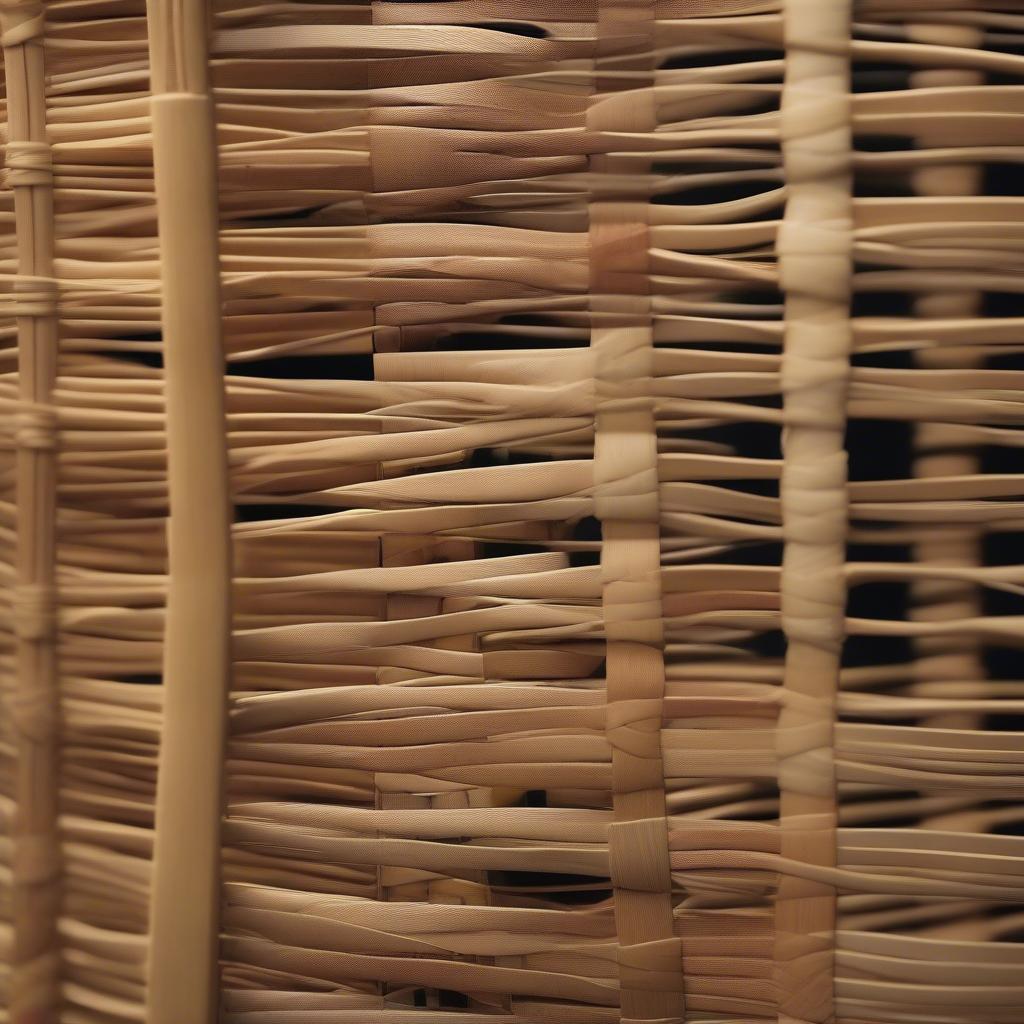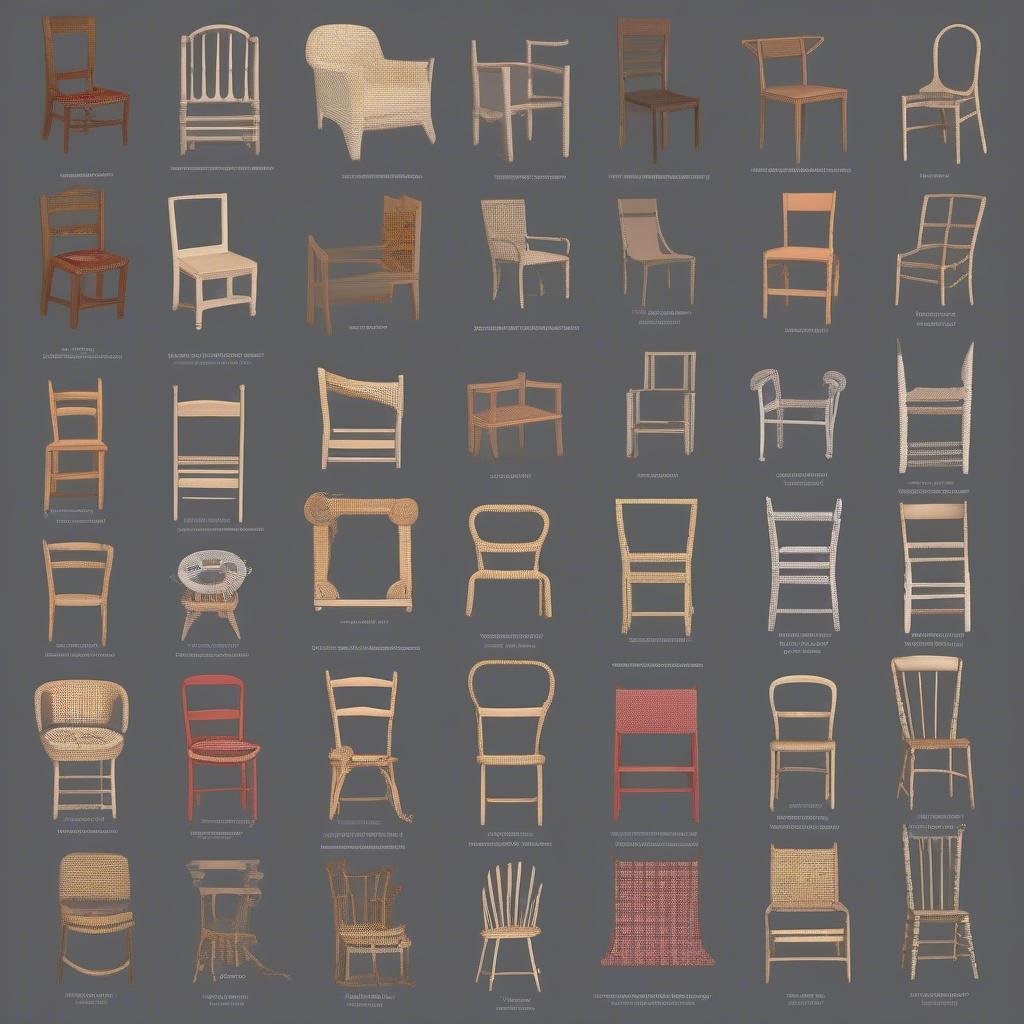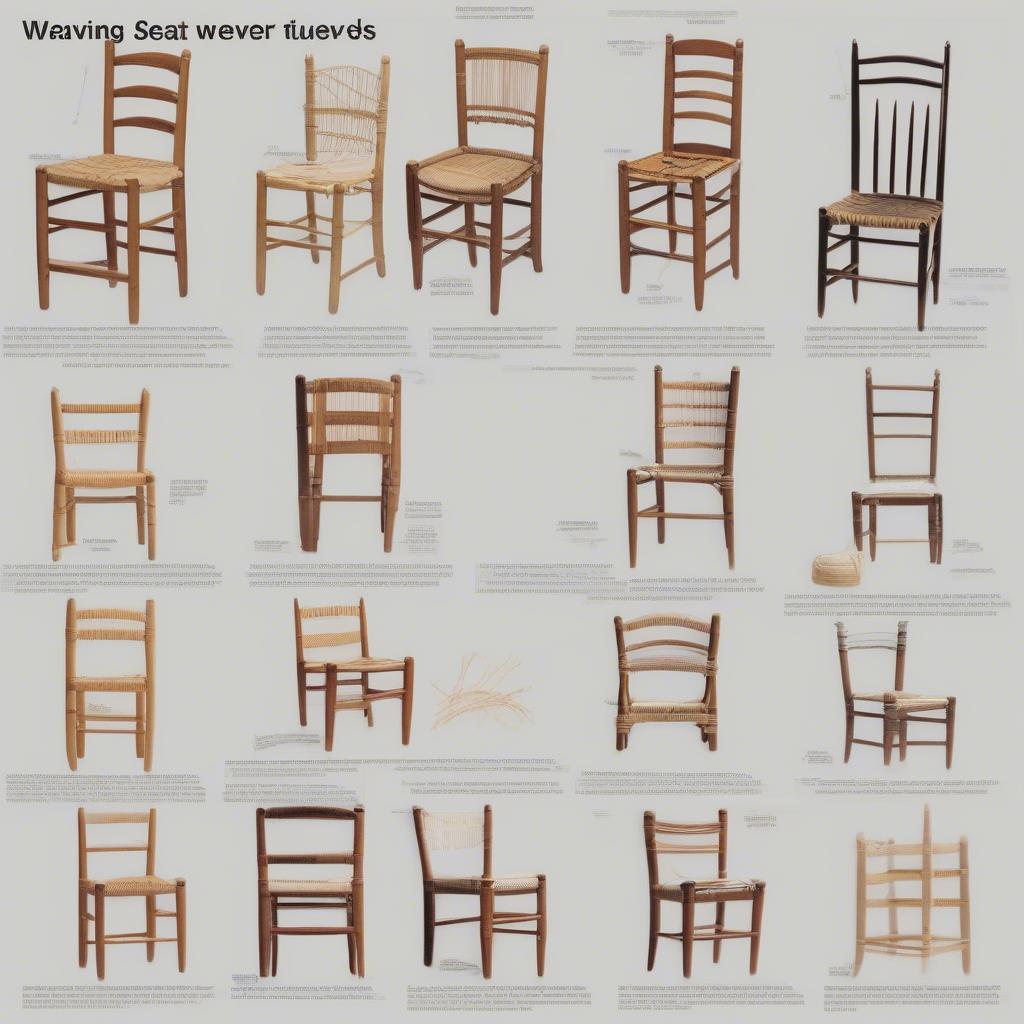Weave Chair
Chair Seat Weaving Patterns: A Comprehensive Guide
Chair seat weaving is a timeless craft that allows you to create beautiful and functional works of art. Whether you’re restoring a cherished heirloom or adding a personal touch to a new piece, understanding Chair Seat Weaving Patterns is essential. This guide will explore the fascinating world of chair seat weaving, from traditional techniques to modern interpretations, helping you choose the perfect pattern for your next project.
Exploring Different Chair Seat Weaving Patterns
 Traditional Chair Seat Weaving Patterns: Examples of rush, splint, and wicker weaves.
Traditional Chair Seat Weaving Patterns: Examples of rush, splint, and wicker weaves.
From simple and straightforward designs to complex and intricate motifs, the world of chair seat weaving patterns offers a diverse range of options. Let’s delve into some of the most popular choices:
- Rush Seating: A classic choice known for its durability and rustic charm. Rush seating uses dried rushes, creating a comfortable and supportive seat.
- Splint Weaving: Utilizing thin strips of wood, splint weaving produces a strong and visually appealing seat. This technique allows for intricate patterns and designs.
- Wicker Weaving: Using flexible plant materials like wicker or rattan, this technique creates a lightweight yet sturdy seat. Wicker weaving is known for its intricate and decorative patterns.
- Danish Cord Weaving: This pattern uses a continuous length of cord to create a strong and supportive seat. Danish cord weaving is a popular choice for modern furniture.
- Paper Cord Weaving: A sustainable option using twisted paper cord. Paper cord weaving offers a comfortable and unique look.
Choosing the Right Pattern for Your Project
 Choosing the Right Chair Seat Weaving Pattern for Your Project: Factors to consider, including chair style, materials, and skill level.
Choosing the Right Chair Seat Weaving Pattern for Your Project: Factors to consider, including chair style, materials, and skill level.
Selecting the right chair seat weaving pattern depends on several factors:
- Chair Style: A simple rush seat complements a rustic chair, while a complex wicker weave enhances a more ornate piece.
- Materials: The material you choose impacts the seat’s durability, comfort, and overall aesthetic.
- Skill Level: Beginners might prefer simple patterns like rush seating, while experienced weavers can tackle more intricate designs.
Mastering the Art of Chair Seat Weaving
 Mastering Chair Seat Weaving Techniques: Step-by-step instructions for various weaving patterns, including tools and materials.
Mastering Chair Seat Weaving Techniques: Step-by-step instructions for various weaving patterns, including tools and materials.
Learning chair seat weaving requires patience and practice. Here are some tips for success:
- Start with a Simple Pattern: Mastering a basic pattern builds confidence and lays the foundation for more complex designs.
- Invest in Quality Materials: Using durable and high-quality materials ensures a long-lasting and beautiful finished product.
- Practice Regularly: Consistent practice hones your skills and allows you to explore different techniques.
“Choosing the right pattern can transform a simple chair into a statement piece,” says renowned furniture restorer, Amelia Blackwood. “It’s about finding the perfect balance between form and function.”
“Don’t be afraid to experiment with different materials and techniques,” adds John Carpenter, a master weaver with over 30 years of experience. “That’s how you discover your unique style and create truly exceptional pieces.”
Conclusion
Chair seat weaving patterns offer endless possibilities for transforming your furniture. By understanding the different techniques and choosing the right pattern for your project, you can create beautiful and functional pieces that will last for generations. Remember to start with a simple pattern and practice regularly to master this timeless craft.
“Mastering chair seat weaving is a journey, not a destination,” advises Amelia Blackwood. “Enjoy the process of learning and creating, and your passion will shine through in every piece you weave.”
FAQ
- What is the easiest chair seat weaving pattern for beginners? Rush seating is generally considered the easiest for beginners due to its straightforward technique.
- What materials are used in chair seat weaving? Common materials include rush, splint, wicker, rattan, Danish cord, and paper cord.
- Where can I find chair seat weaving patterns? Books, online tutorials, and craft stores offer a wealth of resources.
- What tools do I need for chair seat weaving? Essential tools include a weaving needle, a measuring tape, scissors, and a mallet.
- How long does it take to weave a chair seat? The time varies depending on the pattern’s complexity and your skill level.
- Can I repair a damaged woven chair seat? Yes, often damaged seats can be repaired by replacing the worn or broken material.
- What are some tips for maintaining a woven chair seat? Avoid excessive moisture and direct sunlight. Regular dusting and occasional cleaning with a damp cloth can help preserve the material.
Common Chair Seat Weaving Scenarios
- Replacing a worn-out rush seat on an antique chair.
- Adding a woven seat to a newly built stool or bench.
- Repairing a damaged wicker chair seat.
- Learning a new weaving technique to create a unique piece of furniture.
Further Exploration
Check out these related articles on our website:
- A Beginner’s Guide to Rush Seating
- Exploring the Intricacies of Splint Weaving
- The Art of Wicker and Rattan Weaving
For further assistance, please contact our 24/7 customer support team via Hotline: +84 388 951 999, or visit our offices located in Hanoi, Vietnam and Tech Avenue, Suite 12, San Francisco, CA 94105, USA.
